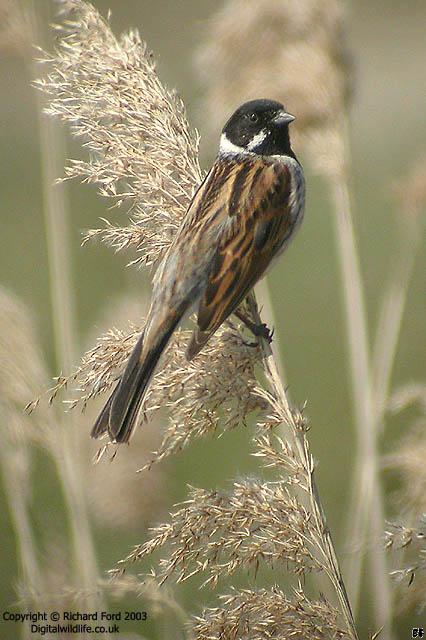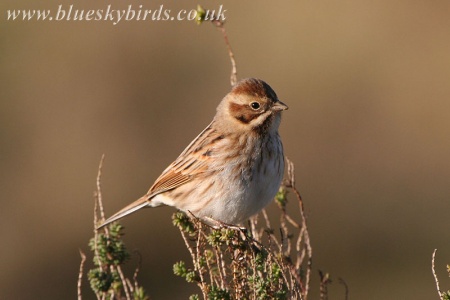Marks-35234 (talk | contribs) m (→Identification) |
|||
| Line 1: | Line 1: | ||
;Emberiza schoeniclus | ;Emberiza schoeniclus | ||
| − | [[Image:Reed_Bunting.jpg|thumb| | + | [[Image:Reed_Bunting.jpg|thumb|450px|right|Photo by Richard Ford male]] |
| − | == | + | ==Identification== |
The male in breeding plumage is more or less unmistakable, except that there is a very closely related Siberian species which has occured in Europe. | The male in breeding plumage is more or less unmistakable, except that there is a very closely related Siberian species which has occured in Europe. | ||
| − | == | + | ==Distribution== |
A common breeder in reedbeds and marshland in much of Europe, it has over recent decades become less specialised in its habitat preference and is now found in drier habitats. | A common breeder in reedbeds and marshland in much of Europe, it has over recent decades become less specialised in its habitat preference and is now found in drier habitats. | ||
| − | + | ==Taxonomy== | |
| − | [[Image:reedbunting_female.jpg|thumb| | + | ==Habitat== |
| + | ==Behaviour== | ||
| + | [[Image:reedbunting_female.jpg|thumb|450px|right|Photo by postcardcv<br />female]] | ||
==Bird Song== | ==Bird Song== | ||
Revision as of 13:57, 18 September 2007
- Emberiza schoeniclus
Identification
The male in breeding plumage is more or less unmistakable, except that there is a very closely related Siberian species which has occured in Europe.
Distribution
A common breeder in reedbeds and marshland in much of Europe, it has over recent decades become less specialised in its habitat preference and is now found in drier habitats.
Taxonomy
Habitat
Behaviour
Bird Song
<flashmp3>Emberiza schoeniclus (song).mp3</flashmp3>
Listen in an external program





